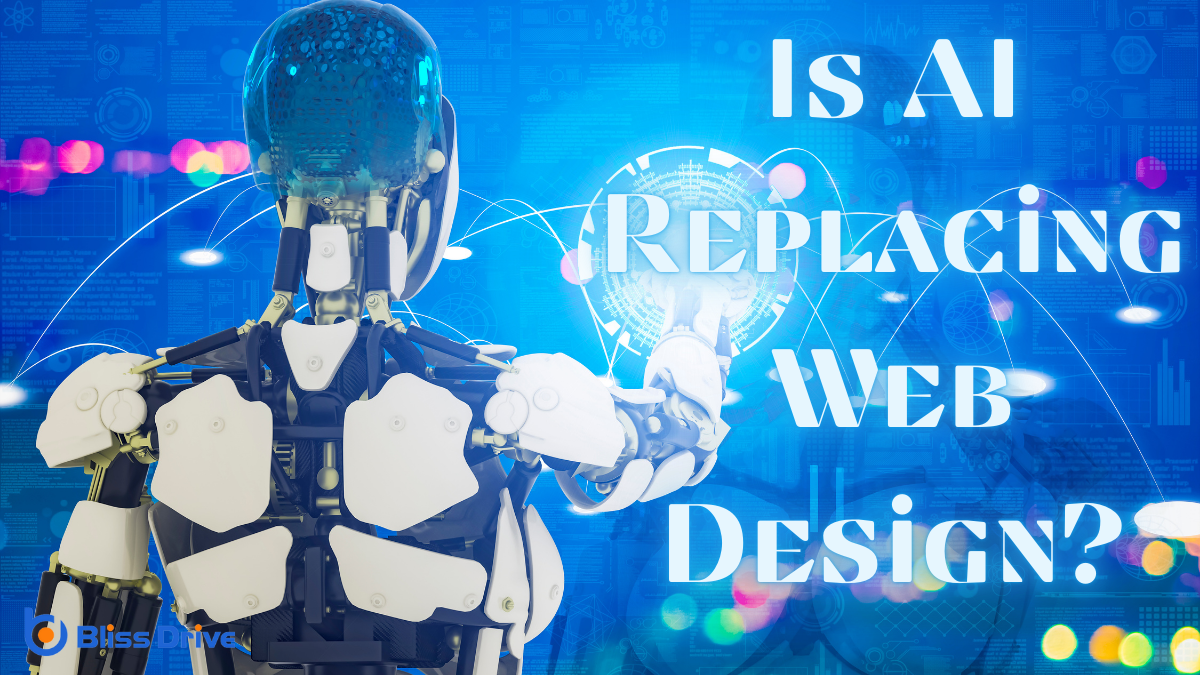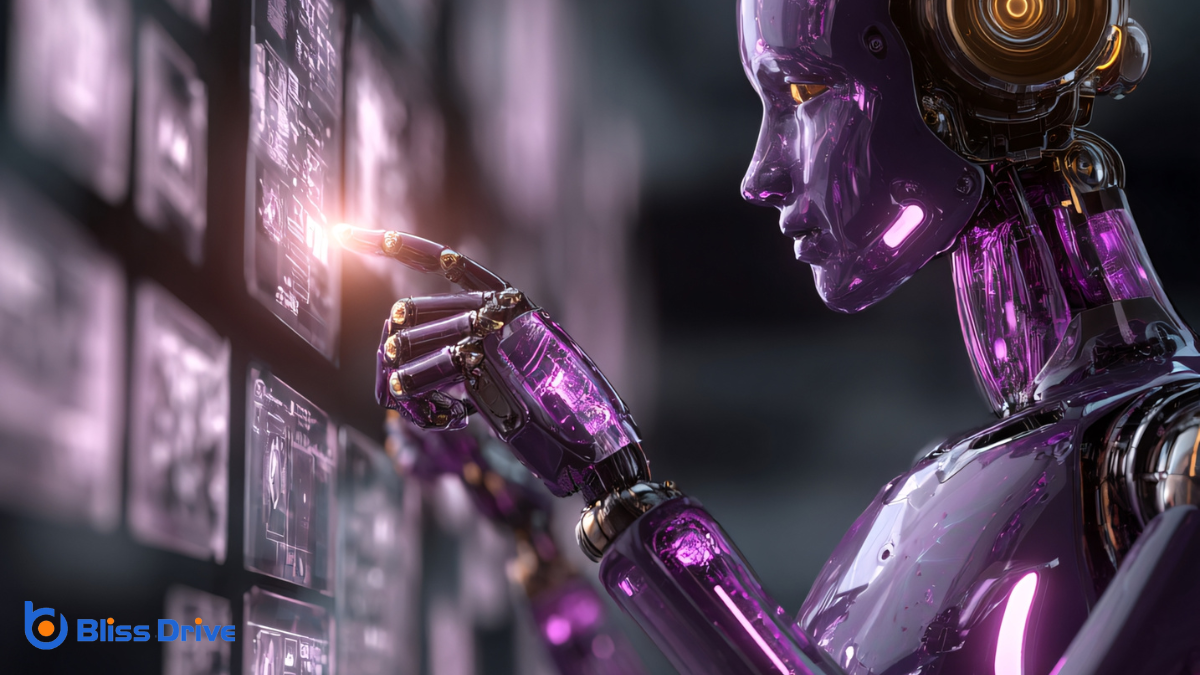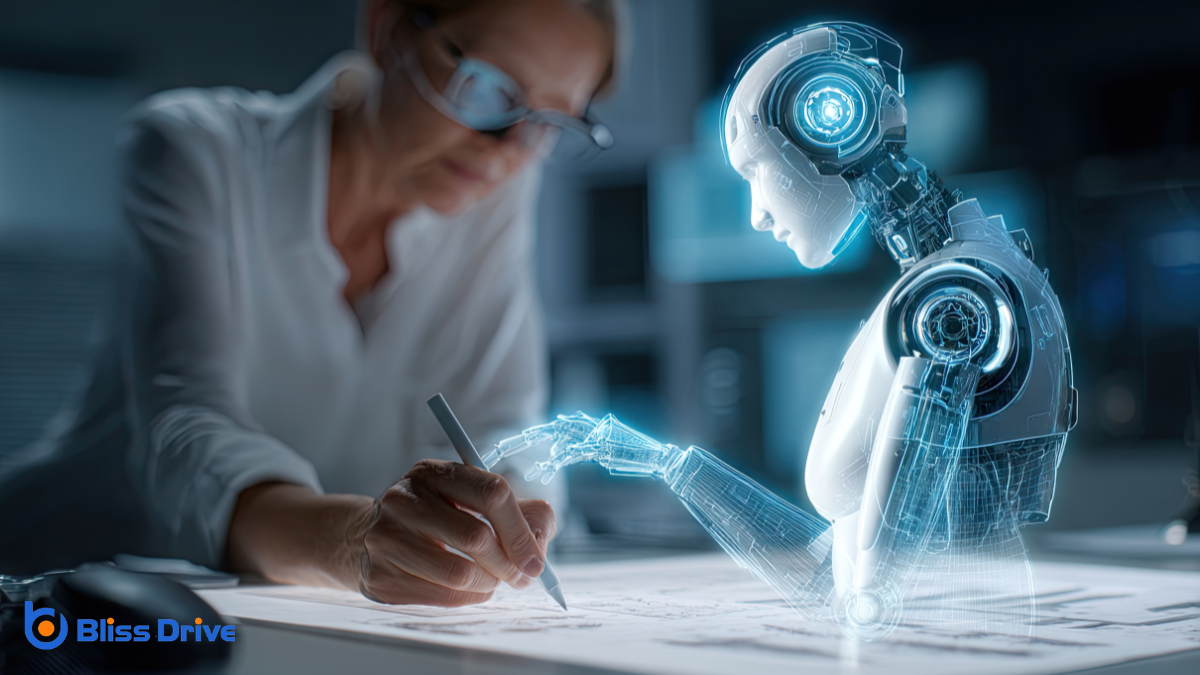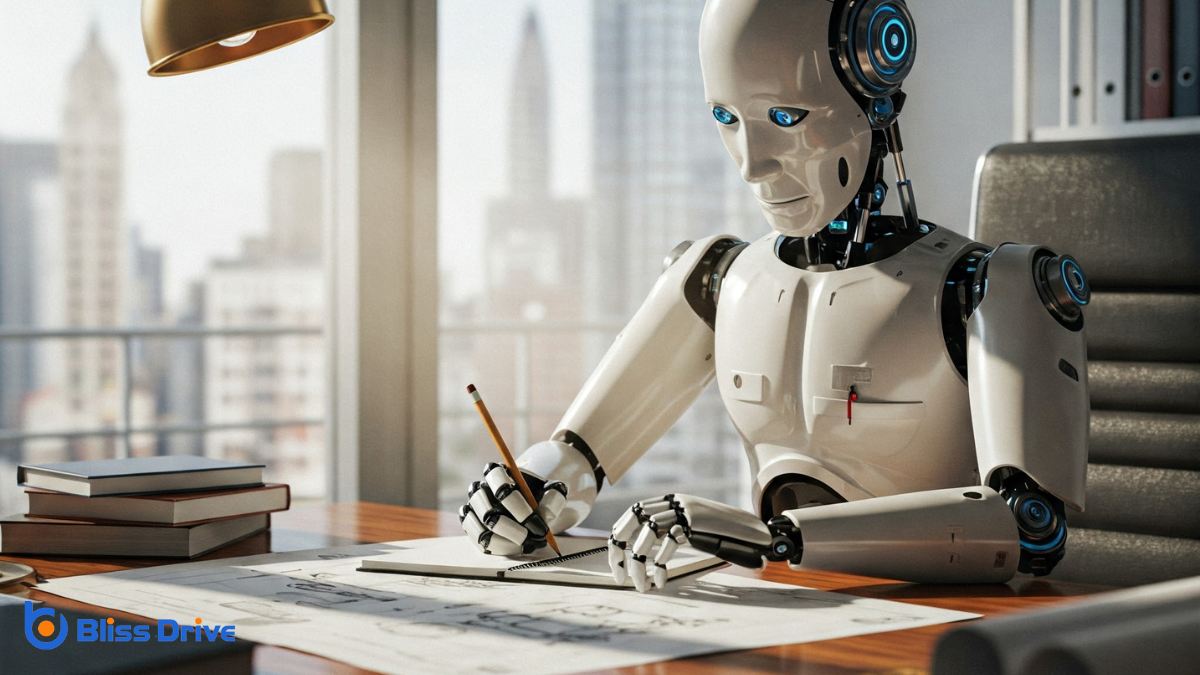Digital Marketing Services
Learn More About Us

As we explore the role of AI in web design, we might wonder if it's truly taking over the industry. While AI automates tasks and offers real-time insights, it doesn't mean human creativity is obsolete. Instead, AI complements our skills, enhancing the design process and allowing us to focus on innovation. Join us as we uncover how AI and human designers can work together to shape the future of web design.
As we explore understanding AI in web design, it's crucial to recognize how artificial intelligence is reshaping the landscape. AI enhances our ability to create more personalized and efficient user experiences.
We see AI analyzing user data in real-time, allowing us to adapt designs swiftly to meet evolving demands. By leveraging AI's capabilities, we can improve website accessibility, ensuring that content is inclusive and easy to navigate for everyone.
AI also assists us in predicting trends and user preferences, enabling proactive design adjustments. It optimizes our workflow by automating repetitive tasks, freeing our time for creativity and strategic thinking.
As designers, we must embrace AI as a valuable tool that complements our skills, helping us push the boundaries of innovative web design.

Let's explore how AI-powered design tools are changing the landscape of web design.
With automated design processes and machine learningA subset of artificial intelligence where computers use data to learn and make decisions. algorithms, we're witnessing a shift toward more efficient and adaptive designDesigning webpages to adjust to different screen sizes and devices, similar to responsive design. solutions.
These tools aren't just speeding up workflows; they're also enabling us to create more personalized and visually appealing websites.
While traditional web design has long been a staple of the digital landscape, we're witnessing a transformative shift with the rise of AI-powered design tools.
These tools automate many design processes, making it easier and faster to create visually appealing websites. By leveraging AI, we can quickly generate layouts, select color schemes, and even adjust typography to fit our brand's aesthetic. This automation reduces the time spent on repetitive tasks and allows us to focus more on creativity and strategy.
Moreover, AI-driven design tools provide real-time feedback and suggestions, helping us refine our designs instantly. They learn from user interactions, adapting to preferences and improving over time.
This integration of AI not only enhances efficiency but also boosts the quality of our web designs, meeting modern demands seamlessly.
Harnessing the power of machine learning algorithms, AI-powered design tools are revolutionizing how we approach web design. By learning from vast datasets, these tools adapt and refine their capabilities, offering us innovative ways to create stunning websites.
Let’s explore how they’re reshaping our design landscape:
Let's explore how AI is transforming web design by automating tasks like layout generation and smart color suggestions.
By using AI, we can also personalize content more effectively, tailoring experiences to individual users.
These tools not only save us time but also enhance creativity and user engagementThe level of interaction and involvement users have with social media content..
With the emergence of AI technologies, automated layout generation is transforming the web design landscape. We’re now able to streamline the design process, allowing us to focus on creativity and strategy.
Automated tools can handle repetitive tasks, offering a more efficient path to website creation. Here's how AI enhances layout generation:
AI's ability to offer smart color suggestions is revolutionizing how we approach web design. We've all faced the challenge of choosing the perfect color palette that aligns with a brand's identity while ensuring accessibility and aesthetics.
Now, AI tools simplify this process by analyzing the content and providing palettes that enhance user experience and engagementThe interactions that users have with a brand’s content on social media.. By understanding color psychology and current design trends, AI suggests combinations that resonate with audiences and convey the desired message effectively.
With AI, we save time that we'd otherwise spend deliberating over color choices. These tools quickly adapt to different design needs, offering personalized recommendations.
This doesn't just streamline our workflow—it empowers us to focus on creativity, ensuring that our designs remain fresh and impactful without the guesswork.
Content personalizationTailoring content to meet the specific needs and preferences of individual users. tools are transforming how we tailor web experiences to individual users. With AI, we can dynamically adapt content based on user preferences and behaviors, enhancing engagement and user satisfaction.
Let’s explore how these tools impact web design:
Although artificial intelligence isn't yet replacing web design entirely, it plays an essential role in enhancing user experience. AI helps us analyze user behavior and preferences, allowing us to design more intuitive and responsive interfaces.
By leveraging machine learning algorithms, we can predict user needs and customize their journey through a website.
We utilize AI-driven chatbotsAutomated programs that simulate human conversation to assist customers and improve their shopping e... to provide real-time support, guaranteeing users receive immediate assistance. These chatbots simulate human interaction, making communication seamless and efficient.
Additionally, AI helps optimize website speed and performance by analyzing data to identify and resolve bottlenecks.
Our ability to create dynamic, personalized content is also boosted by AI, as it adapts to users' evolving interests. In doing so, we guarantee our websites remain engaging, relevant, and user-friendly.

In web design, our creative instincts bring something irreplaceable—human-driven artistic innovation.
We connect emotionally through unique personal expression, which AI struggles to replicate.
Let’s explore how these elements keep the human touch essential in design.
While AI technology has advanced remarkably, the irreplaceable value of human-driven artistic innovation remains strong in web design.
As we navigate this digital landscape, our creative instincts guarantee designs that resonate on a deeper level.
Let's explore three ways human creativity elevates web design:
When it comes to web design, the emotional connection we create with users is where our human touch truly shines. We recognize emotions and experiences, which allows us to craft designs that resonate on a personal level. This connection is essential because it transforms a site from just a visual experience to an engaging interaction.
Our empathy guides us in choosing colors, imagery, and layouts that evoke the right feelings. We can interpret subtleties in user behavior and adjust designs to meet unspoken needs.
While AI can analyze data and suggest optimizations, it lacks the intuitive grasp of human emotions. As designers, we guarantee our projects speak to the heart, creating meaningful experiences that users remember and cherish, beyond just functionality.
Though technology has made great strides, it can't replicate the unique personal expression that defines human creativity in web design. We believe that our individuality is what breathes life into the digital canvas, offering something AI struggles to emulate.
Let’s explore why personal expression remains essential:
In essence, our creativity adds a layer of richness that AI simply can’t duplicate.
As we explore AI's impact on brand identityThe visible elements of a brand, such as color, design, and logo, that identify and distinguish the ..., it's clear that the technology is transforming how we perceive and build brands.
AI tools analyze vast amounts of data to understand consumer preferences and behaviors. By doing so, they help us create more personalized and consistent brand experiences. We can use AI to identify trends and adapt our brand strategies swiftly, ensuring relevance in a fast-changing market.
Additionally, AI can enhance creativity by providing design suggestions that align with our brand's voice and values. While AI crafts logos, color schemes, or even brand messages, we maintain control over the narrative.
AI is a powerful ally, allowing us to make informed decisions that strengthen our brand identity while staying true to our core vision.
While AI offers significant advantages in shaping brand identity, it's not without its limitations in design.
We must recognize that AI, though powerful, can't fully replicate human creativity and intuition. Here are a few limitations we should consider:

Embracing AI in web design isn't about replacing human creativity but enhancing it. By integrating AI, we can streamline repetitive tasks, allowing more time for innovation and artistic expression.
AI tools can analyze user data to help us understand trends, preferences, and behaviors, enabling us to craft more personalized and engaging user experiences.
Let's consider how AI can assist in generating design elements like color schemes and layouts based on established brand guidelinesA set of rules and standards that define the visual and verbal elements of a brand.. This automation guarantees consistency and saves time, allowing us to focus on the creative aspects of design.
Furthermore, AI-driven analyticsThe systematic computational analysis of data or statistics to gain insights and support decision-ma... provide insights into user interactions, helping us refine and optimize designs over time. By leveraging AI, we maintain control while elevating our design capabilities.
Building on the integration of AI in streamlining tasks, let's explore how AI can work alongside designers as a collaborative partner.
Together, we can leverage AI to enhance creativity and efficiency, rather than viewing it as a replacement.
Here are three ways AI serves as a collaborative tool:
Embracing AI as a partner empowers us to elevate our design capabilities.
As we look to the future of web design in an AI-driven world, it's clear that the landscape is evolving rapidly.
We find ourselves at the intersection of creativity and technology, where AI isn't just a tool but a partner in design. It streamlines processes, allowing us to focus more on innovation and user experience.
AI's ability to analyze vast amounts of data means we can create personalized websites that adapt to user behavior in real-time. This dynamic interaction is set to redefine how we approach design.
However, it doesn't mean abandoning our skills. Instead, we must embrace continuous learning and adaptability, harnessing AI's capabilities while maintaining our unique human touch.
The future is about synergy, not replacement.
In our journey with AI in web design, we've discovered that it's not about replacement but enhancement. AI streamlines our workflows, allowing us to focus on the creative aspects that machines can't replicate. Together, we can leverage AI to push boundaries, create richer user experiences, and stay ahead of trends. As we embrace this collaboration, the future of web design promises to be more innovative and dynamic, driven by the synergy between human creativity and AI capabilities.
